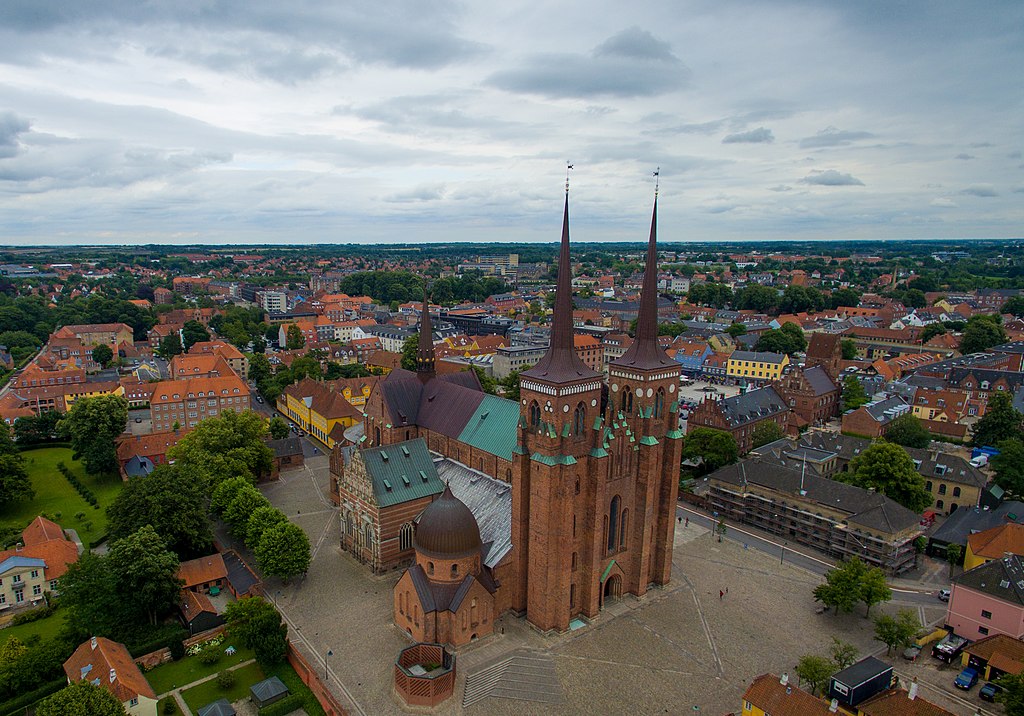Water: the Most Common Enemy of Cultural Heritage
The damage that water can cause is among the most significant to which historical and cultural heritage is exposed. From localized damage from firefighting systems to the large-scale effects of flash flooding, water is a constant concern for those tasked with ensuring the safety and preservation of historic and cultural heritage.

Water’s impact ranges from rising sea levels and floods to humidity, which can lead to erosion, mold, and structural decay of buildings and artefacts. In this regard, it is important to remember that the main risks are related to floods. These, however, are of different types. Each type of flood occurs and is predicted differently as are the impacts of each type of flood and the actions needed to take to avoid or minimize damage.
Classifying floods
According the Zurich website floods can be classified into three main types:
River floods. A river flood occurs when the water level in a river, lake, or stream rises and overflows onto nearby land. The rising water level of the river may be due to excessive rainfall or melting snow. To determine the likelihood of river flooding, models consider past rainfall, forecast rainfall, current river levels, and soil and land conditions. The severity of a river flood is determined by the terrain profile and the duration and intensity (volume) of rainfall in the river’s catchment area. Other factors include soil water saturation and the effects of climate change on the duration and intensity of rainfall. In low-lying areas, flood water tends to rise more slowly and be shallower, but can often remain for days. In hilly or mountainous areas, flooding can occur within minutes of heavy rainfall, drain very quickly, and cause damage through debris flow.
Pluvial flooding (flash flooding). A pluvial flood occurs when an extreme rainfall event creates an independent flood from a swollen body of water. A common misconception about flooding is that you have to be near a body of water to be at risk. Yet pluvial flooding can occur anywhere, urban or rural, even in areas without nearby bodies of water. There are two common types of pluvial flooding:
- Surface water flooding. Surface flooding occurs when an urban drainage system is overloaded and water flows into nearby streets and structures. It occurs gradually, giving people time to move to safety, and the water level is usually low (rarely deeper than 1 meter). It does not pose an immediate threat to human life but can cause significant economic damage.
- Flash flooding. is characterized by a high-velocity, intense torrent of water. It is triggered by torrential rains falling in a short period of time nearby or on nearby elevated land. Flash flooding can also be caused by a sudden release of water from an upstream levee or dam. They can be very dangerous and destructive, not only because of the force of the water, but also because of the debris that is often swept up in the flow.
Coastal flooding (storm surge). Coastal flooding is the inundation of land along the coast by seawater. It is usually caused by intense windstorm events, especially when they coincide with high tide, which create a storm surge. But coastal flooding can also be caused by tsunamis. Storm surge occurs when strong winds from a windstorm push water ashore and is often the greatest threat associated with a hurricane or typhoon. The impact depends on the tide. Windstorms that occur during high tide can cause storm surge flooding that submerges low-lying land and causes devastating loss of life and property. The severity of a coastal flood is determined by several other factors, including the strength, size, speed, and direction of the windstorm. Onshore and offshore topography also plays a role. Coastal flood models consider this information in addition to historical storm data to determine the likelihood and magnitude of a storm surge. But as sea levels rise due to climate change, more coastal cities and communities will become vulnerable to coastal flooding.
Some recents events
Over the past five years, several flood events have caused significant damage to cultural heritage around the world. Flooding, often caused by heavy rainfall, hurricanes, or rising sea levels, has had a devastating impact on priceless historical sites, buildings, and collections. Here is a list of some of the most notable damages.
Pakistan Floods (2022) The floods affected Pakistan Sindh. Devastating monsoon floods have affected large parts of Pakistan, destroying cities, villages, and historic infrastructure. The floods have damaged immovable cultural heritage, including ancient mosques, forts, and archaeological sites. Among the most affected sites are the Umarkot Forts, which dates back to the 16th century, and other valuable historical monuments. Some museums and collections of archaeological artifacts have been damaged or destroyed.
Floods in Venice-Italy (2019) On November 22, 2022, an extreme storm hit the Northern Adriatic Sea. The flood damage could not be mitigated because the Mose system (the protection system against high tides) was not activated in time during a sudden high tide that hit Venice in November 2019. The waters exceeded 187 cm, causing significant damage to Piazza San Marco, Basilica di San Marco, Palazzo Ducale and numerous museums and churches. Several artefacts, such as frescoes and floors, were damaged, as well as the Venice lagoon, a UNESCO site, which suffered ecological damage.
Floods in Germany and Belgium (2021) On 14 and 15 July 2021, a flood event affected parts of Belgium, Germany and surrounding countries, causing more than 200 fatalities and resulting in large socioeconomic impacts. Heavy rains and subsequent flooding devastated entire neighborhoods, including numerous historic sites. In Germany, Traben-Trarbach, a picturesque village with many historic buildings, suffered severe damage. The Ahrweiler Art Museum and other cultural facilities saw artworks and historic collections destroyed or damaged. Sinzig Castle also suffered damage from the water.
India Floods (2020 and 2021) On July 2020 heavy rain affected central and southern India States, particularly Telangana, Andra Pradesh, North Karnataka, and South Odisha. Kerala and Uttarakhand were hit by floods in October 2021. In both events monsoon floods have damaged numerous historical temples, forts, and palaces.
Myanmar Floods (2011 – 2024) The entire country of Myanmar, especially the central area has been subjects to floods that affected many religious and cultural sites, including temples and stupas in Bagan, a UNESCO World Heritage site. The waters damaged or destroyed many valuable buildings, including frescoes and sculptures in many ancient temples.
China Floods (2021) Between 17 and 31 July Zhengzhou, Henan Province, Yangtze and Huai Rivers floods caused damage to historical and architectural sites. The city of Zhengzhou, home to the ancient Shang civilization, saw damage to some archaeological excavations and temples. Luoyang, the ancient capital of the Tang Dynasty, suffered significant damage to historic structures, with Buddhist temples and archaeological remains damaged.
Sudan Floods (2020) In September 2020, profuse and continuous rainfall in Sudan caused a devastating flood in Khartoum and surrounding areas. Floods damaged Nubian historical monuments, including World Heritage sites such as the pyramids of Meroe. Waters damaged the archaeological area, destroying supporting infrastructure and putting important artifacts at risk.
New Orleans Floods, USA (2021) In Mid-may 2021 torrential rains affected New Orleans, Louisiana. Hurricane Ida caused flooding that damaged both the city and some of its historic buildings. The city, famous for its French Quarter, suffered significant damage, although most of the historic buildings were protected by safety measures. However, some museum and gallery collections were damaged.
Raising awareness and providing expertise
Faced with increasingly serious damage caused by floods, many major institutions and organisations involved in cultural preservation emphasize this issue:
- United Nations Educational, Scientific and Cultural Organization (UNESCO). In the context of the preservation of cultural heritage UNESCO has addressed water as a primary concern for the safeguarding of World Heritage Sites, including those threatened by flooding, rising sea levels, and increased humidity. The Organization highlights also water-related challenges like erosion, flooding, and the impact of rising sea levels on heritage sites in the context of sustainable tourism. UNESCO has adopted the Convention for the Protection of the World Cultural and Natural Heritage and published the World Heritage and Sustainable Tourism Programme.
- International Council for monuments and sites (ICOMOS) in providing expert advice to UNESCO on cultural heritage issues has frequently addressed the vulnerability of heritage sites to water damage, particularly in relation to urban heritage and coastal sites. The organization’s reports and publications as The Venice Charter and documents related to the Global Strategy for a Representative and Credible World Heritage List highlight the need for addressing water as a central issue for the conservation of both archaeological and architectural sites.
- International Centre for the Study of the Preservation and Restoration of Cultural Property (ICCROM) provides international leadership on the protection of cultural heritage. The organisation frequently addresses water’s impact on both built and movable heritage, focusing on improving global understanding and techniques for mitigating water-related damage to heritage materials in documents as Disaster Risk Management.
- World Monuments Fund (WMF), which works on preserving endangered cultural heritage sites around the globe, in its documents frequently cites water as one of the major threats to heritage sites, particularly those in coastal areas or near bodies of water. The WMF’s World Monuments Watch List highlights sites that are vulnerable to various threats, including water damage.
Conclusion
In conclusion, water-related threats to cultural and historical heritage are becoming increasingly urgent in the face of climate change and extreme weather events. The examples of recent flood disasters across the globe—such as in Pakistan, Venice, Myanmar, and many others—demonstrate the severe and often irreversible impact that water can have on valuable cultural sites and artifacts. As rising sea levels and unpredictable weather patterns intensify, the preservation of these irreplaceable treasures becomes more complex and crucial. International organizations such as UNESCO, ICOMOS, ICCROM, and the World Monuments Fund may play an important role in raising awareness and providing expertise on safeguarding heritage from water damage. However, addressing this challenge requires not only global cooperation but also the development of innovative strategies to prevent, mitigate, and manage water-related risks to heritage.






